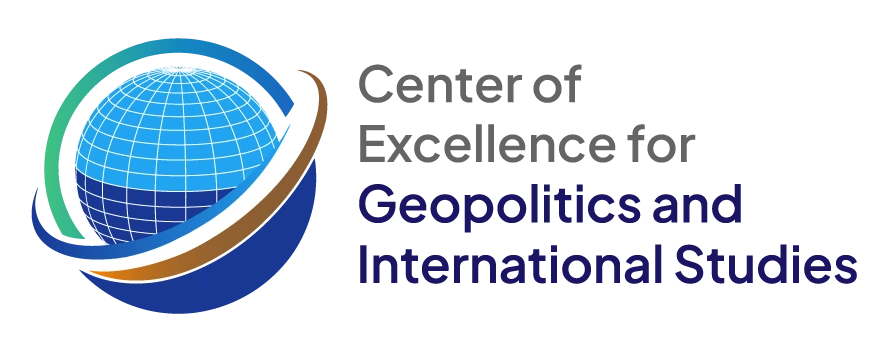India Russia Trade has Multiple Choices for Routing
• Dr. Vijay Sakhuja
Russia is perhaps the most sanctioned country in the world due to the ongoing war with Ukraine. New and varied sanctions are frequently announced and cover multiple sectors - defence, energy, banking, electronics, transport, and civil aviation, to name a few. These have affected Russian economy, industrial production, military industrial complex, and war making potential. Russian freight trucks are barred from entering Europe, Russian-flagged vessels cannot enter many ports across the globe particularly US, UK and Europe, and many individuals including the Russian Transport Minister are under sanction.
Consequently, the Northern Corridor between China and Europe, a large part of it passes through Russia, has received a setback and movement of cargo had reduced considerably. For instance, in 2023, the trade through this route reduced by over 50 percent compared with 2022 volumes. However, the freight-trade corridor i.e. International North South Trade Corridor (INSTC) which is largely complete, barring a few rail sections in Iran, serves as an important Russian trade route with countries of Caucasus, Caspian region, Persian Gulf and South Asia with possibility of connecting with Southeast Asia.
In May 2024, agro products (oat flakes and cereals) were shipped (train-ship-road-ship) from the Yuzhnouralsky Transport and Logistics Center in Chelyabinsk region in the Urals to Bandar Abbas port in Iran to India in about 35 days via the INSTC. It is estimated that transportation of agricultural goods along the INSTC could increase to 100,000 tonnes annually. Interestingly, Chelyabinsk region is also connected with Vladivostok in Russia’s Far East. Early this year in February, a shuttle train delivered over 150 containers carrying agricultural products from Chelyabinsk to Vladivostok Commercial Sea Port for exports to China and Vietnam.
Russia is also planning to export coal to India through the INSTC via Bandar Abbas. On its part, the Islamic Republic of Iran Shipping Lines (IRISL) has announced that it has earmarked 300 containers for shipment of goods from Russia to India and vice versa in the first phase, and the numbers could increase in the future depending on the cargo demand.
Another connectivity corridor between Russia and India is the Eastern Maritime Corridor (EMC) linking Vladivostok with Chennai which compares favourable with the INSTC. It can potentially “reduce the time required to transport cargo between Indian and Russian Ports of the Far East Region by up to 16 days”. The cargoes to be shipped through this corridor are mainly crude, LNG, coal, fertilizers (“high volume and low value”), and containers.
Meanwhile, President Putin announced that his country is augmenting infrastructure to increase cargo movement along the Northern Sea Route (NSR). At the recently concluded St. Petersburg International Economic Forum (SPIEF), Putin stated that in 2023, nearly 36 million tonnes of cargo was transported through the NSR and in the future it may exceed 150 million tonnes.
In the context of the NSR, Minister Alexei Chekunkov, who heads the Far East and Arctic Development, has noted that the development of the NSR involves “construction of ports, terminals and access routes”. As far as construction of vessels is concerned both Indian and Chinese have expressed interest; but “India has no experience in building ice-class vessels”. Notwithstanding that “the issues are still being worked out”, and Russia and India have been in conversation to identify “construction contractors” who can build ice-classed vessels. Furthermore, the plan could be announced during the Eastern Economic Forum (EEF) scheduled in September 2024. It merits recall that during the last EEF, Sarbananda Sonowal, India’s minister of ports, shipping and waterways had proposed the “joint development of non-nuclear icebreakers at Indian shipyards”.
India’s interest in the NSR is purely “connectivity and trade” driven. In particular the port of Murmansk which is strategically located for transporting cargo in a westward direction and thereafter the traditional shipping routes. In 2023, the port handled 8 million tonnes of cargo between Januarys to July 2023, India accounted for 35 percent, primarily in the form of coal and some crude oil. India Russia trade is on an upward trajectory and their bilateral trade reached $50 billion in 2023. Indian shipping minister Sarbananda Sonowal is confident that the trends are “likely to continue this year” and “will increase more” in the next financial year. A part of this confidence is accrued from the fact that there are multiple routes available to India and Russia to move diverse cargo across destinations in Russia and skirt connectivity hurdles.
Dr. Vijay Sakhuja is Professor and Head, Center of Excellence for Geopolitics and International Studies (CEGIS), REVA University, Bengaluru.
